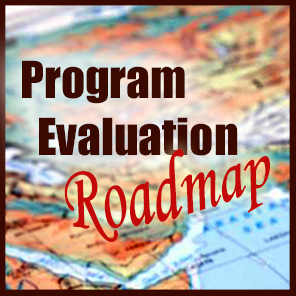
Program Evaluation Roadmap
The purpose of program evaluation is two-fold, to determine if the theory and assumptions our programs are based on are producing the results we expect, and to use the data collected to improve our programs for our participants and other stakeholders. Program evaluation data can and should inform long-term program design, delivery strategies and funding.
Every comprehensive program starts with a plan.
A comprehensive program plan should include an evaluation strategy and steps for collection of data during the delivery of the program, as well as at completion.
What is process evaluation?
Process evaluation measures the success how the program was actually delivered. Was the program implemented as planned? How many classes, field-days, field trials (i.e. methods) were used? Who were the actual participants? Did the program reach the intended audience? What was the cost for different delivery methods? What was the return on the financial investment?
Outcome or Impact evaluation seeks to measure any changes in program participants as a result of participation in a program. Impact evaluation usually includes a continuum of outcomes including:
- Short-term changes in attitudes, awareness and/or knowledge
- Medium-term changes in participant behaviors/practices
- Long-term changes in conditions (environmental, social, health, financial, public policy, etc.)
The long-term outcomes should be based on what the ultimate value of the program is to actual program participants, the general public and/or other key stakeholders who provide funding for the program.
NEED HELP? Learn how to:
- Select an evaluation model that fits your needs
- Plan your evaluation
- Develop and use a logic model for planning and evaluation
- Apply for approval of your research from an Institutional Review Board
- Write and administer a survey
- Collect and analyze your data
Evaluation Methods and Tools
The Nuts and Bolts of Evaluation Planning